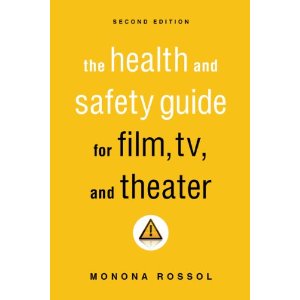The Food Network gives some credit to the shows’ prop master (or design director). Wendy Waxman is responsible for decorating and accessorizing the sets of all the shows filmed at the Food Network’s studios at Chelsea Market.
Congressman Das Williams has introduced legislation to make flesh or proximity detection technology mandatory in all table saws sold in California after January 1, 2015. I have mixed feelings about this. I think safety is important, and I feel in a lot of situations, companies will put out unsafe products until forced otherwise; this is more true with chemicals and toxic substances. But this kind of feature on a table saw is expensive and unwieldy. The vast, vast majority of table saw accidents happen on untrained home hobbyists. [ref]Popular Woodworking analyzed the injury statistics for table saws put out by the CPSC last year.[/ref] This law would make trained users pay for a safety feature that’s more needed for untrained users. Not only that, but job site saws and contractor saws are far too small and light to utilize this technology; I’m only guessing, but I would imagine these kinds of saws are more likely to be used by home hobbyists. Why stop at the table saw? Why not legislate these features on band saws, planers and circular saws? Is it just because a table saw is statistically more dangerous? Because if we’re looking at statistics, a door causes just as many finger amputations per year as a table saw; why not require flesh detection technology on all doors? Anyway, it will be interesting to see how this plays out in the coming months.
Speaking of dangerous tools, AnnMarie Thomas makes the case to let kids use real tools to build things, and not those cheap toy versions. She mentions how an engineering professor asked his class of 35 first-year students whether anyone had ever used a drill press before, and not a single hand was raised. Looks like props people are single-handedly preserving manual-arts training in higher education. Maybe if kids were taught to use tools, we wouldn’t have so many table saw accidents (the majority of which are sustained by men in their 50s; age does not make one safer, only training does).
I’ve wanted something like this for awhile, but never actually sat down to plan one out. But this adjustable sanding jig for a disc sander looks like it’s the perfect design.
The Studio Creations website has a nice tutorial on vacuum forming plastic. Don’t have a vacuum forming table? No, problem, they have a tutorial on how to build one of those as well.

